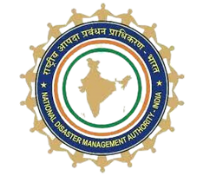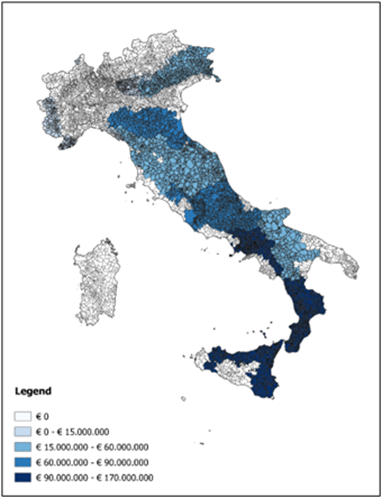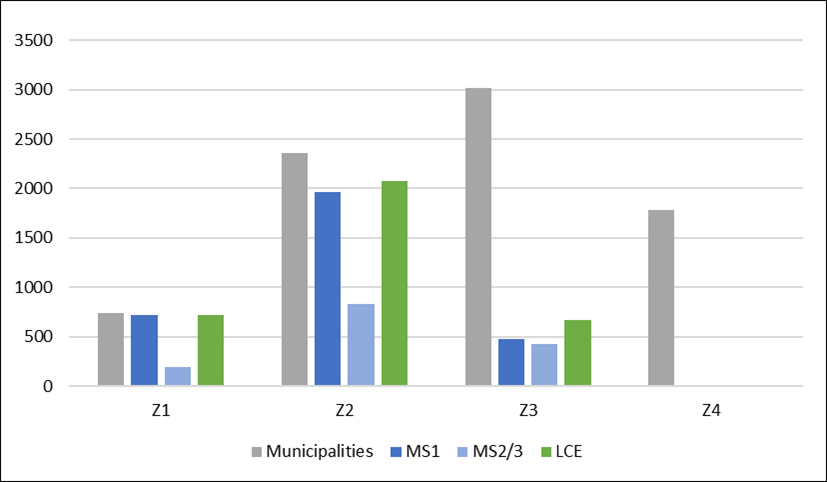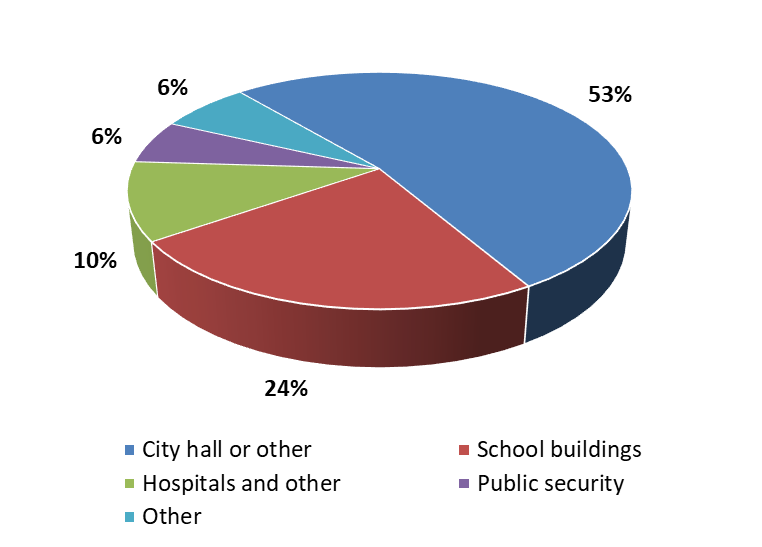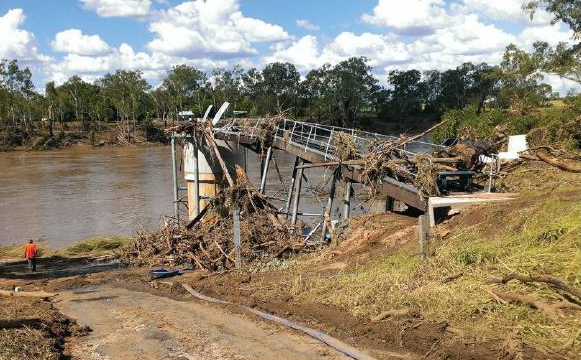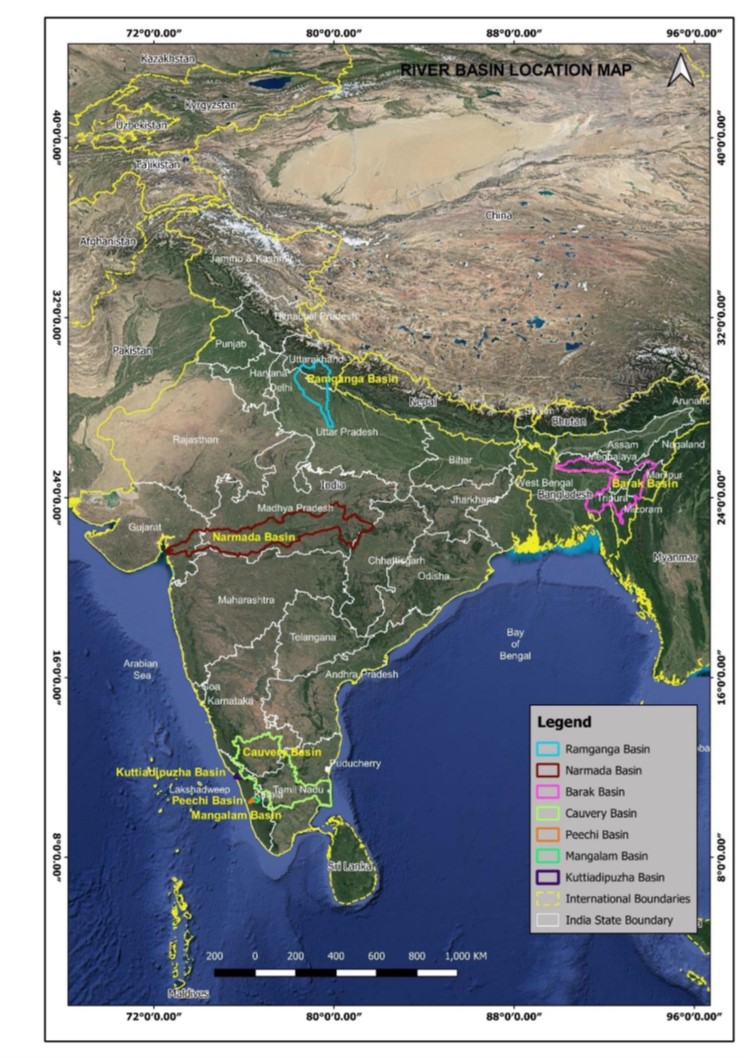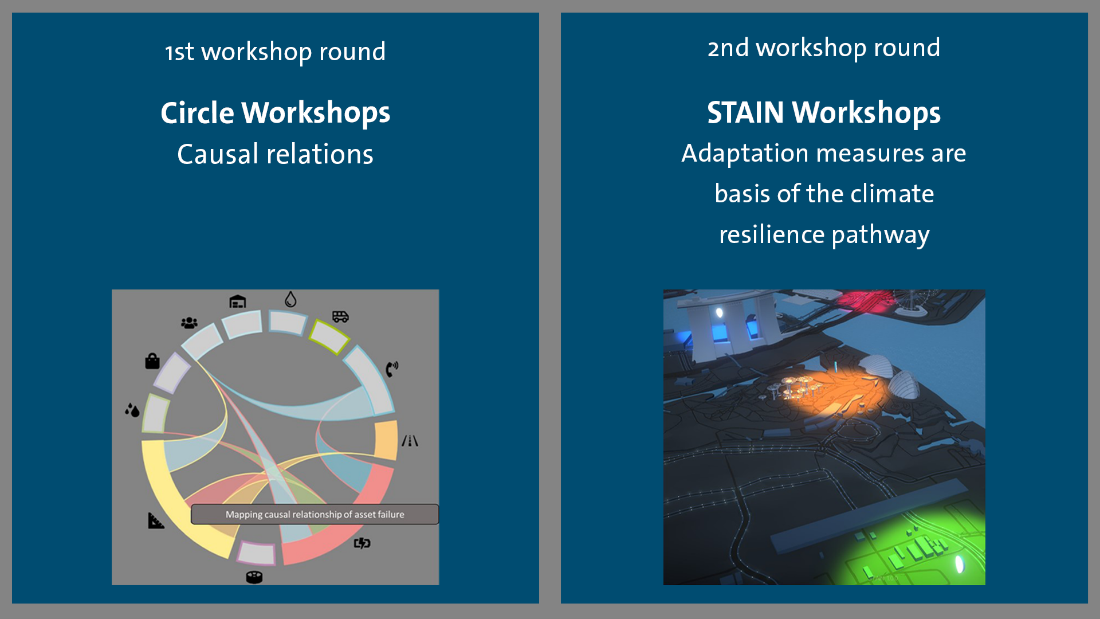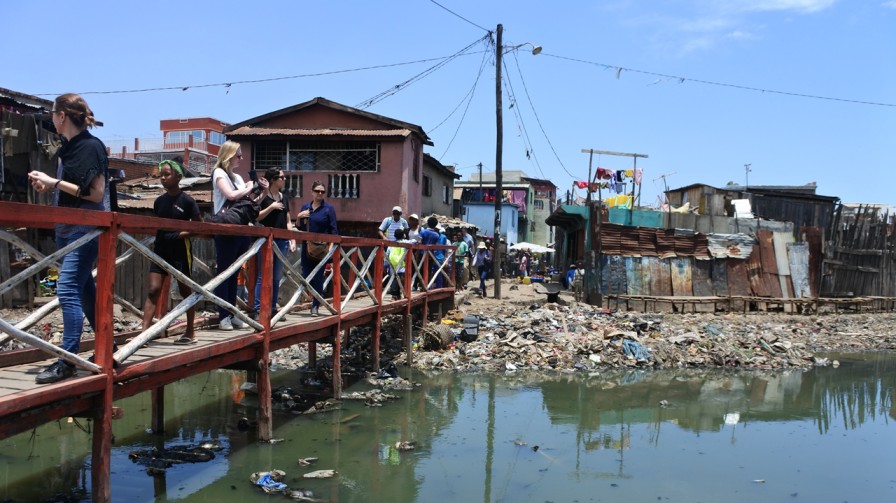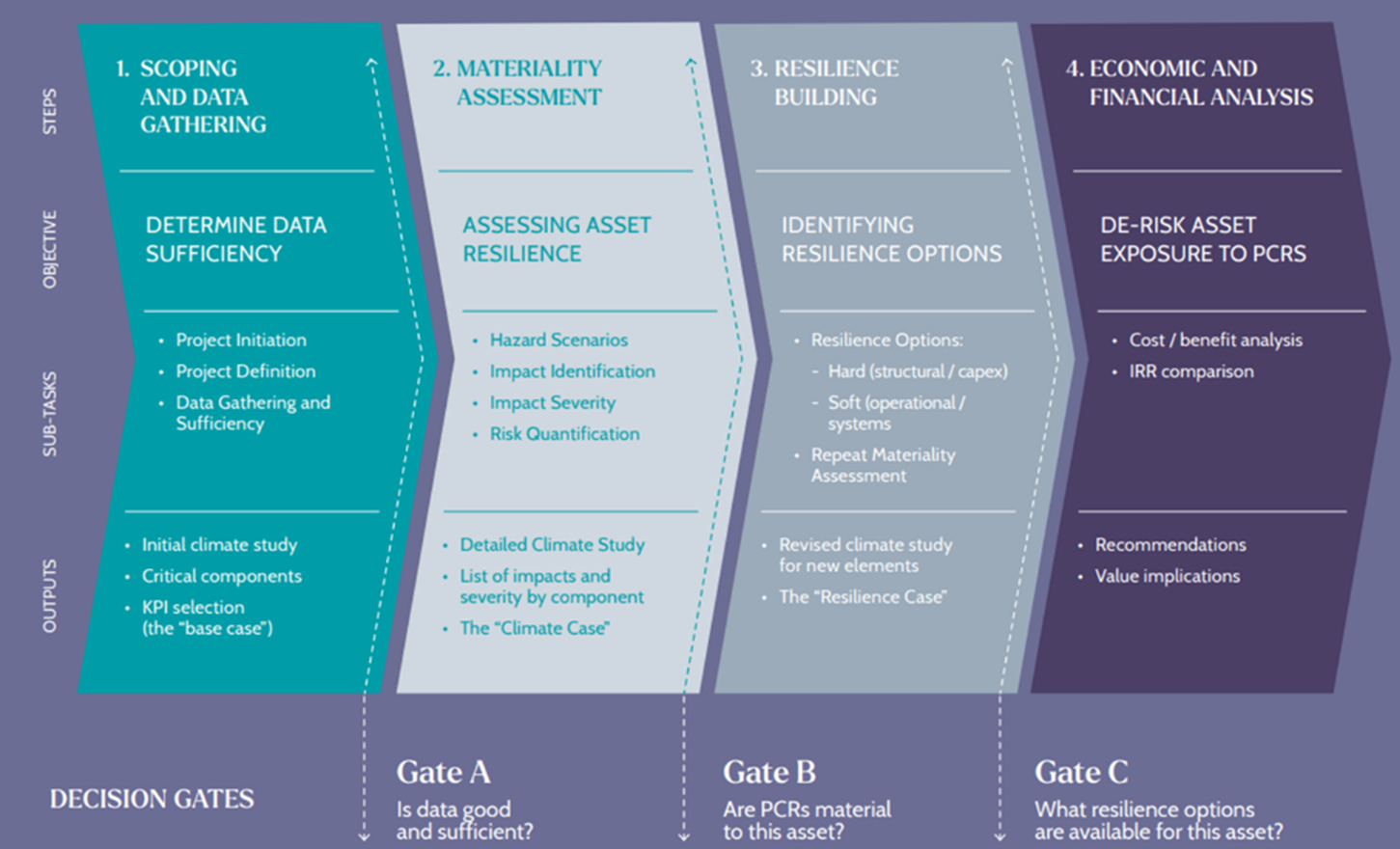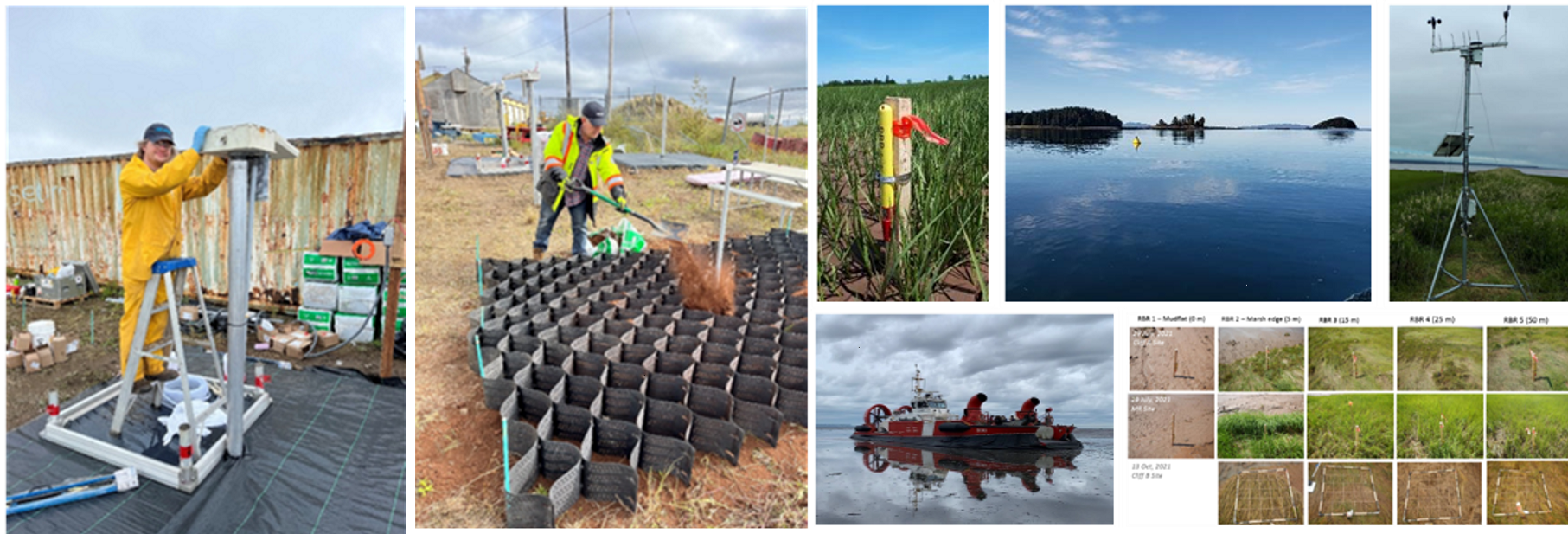Grants through the NSPP initiative are concentrated in the most hazardous areas of the country, which includes around 3,800 municipalities, concentrated mainly in seismic zones 1 and 2 (out of 4). In total, 17 out of 20 Italian Regions, benefit from NSPP grants. The economic resources issued by each ordinance are distributed among the participating Regions according to regional seismic risk indices, considering the probability of building collapse expected in each territory in case of earthquake, shown in the figure.
Actions financed by the NSPP are: (i) Seismic Micro-zonation studies (SM) and Limit Condition for Emergency analyses (LCE); (ii) Seismic retrofit interventions or reconstruction of public buildings and infrastructural items of strategic interest or critical for the consequence of their collapse (iii) Seismic retrofit interventions or reconstruction of private buildings. These actions are implemented by regions, through individual programs considering the requests from local authorities and private beneficiaries, where co-financing is encouraged.
The first measure encompasses two different tools at urban scale. SM studies are aimed at identifying unstable and stable areas and possible soil amplification effects in municipal or inter-municipal areas, according to a different level of analyses ranging from level 1 to level 3. LCE analysis is based on contingency plans at the urban level and are purposed to check critical elements (i.e., buildings, infrastructures, and emergency areas) that should resist the earthquake in order to ensure prompt and efficient management of the emergency phase. To date, most MS studies and LCE analysis financed have been primarily in territories of seismic zones 1 and 2, representing 50% and 40% of the Italian municipalities, respectively.
Retrofit interventions granted by the NSPP are destined for public buildings and infrastructures that are critical for civil protection purposes, as well as to private and productive buildings. Intervention types admitted include local strengthening, global seismic upgrading or demolition and reconstruction, the definitions of which comply with those provided by the Italian technical standards for construction (Minister of Infrastructure Decree, D.M. 2018).
Around 90% of the total endowment is allocated to seismic vulnerability reduction interventions, 81% of which is directed at public buildings and infrastructures and the remaining to the private sector. With respect to interventions directed at critical infrastructure or public buildings, the grant for each structural intervention depends on the type of intervention and on the seismic safety index of the building/infrastructure before the intervention (αSLV). To date, 1,323 structural interventions directed at strategic and relevant buildings have been funded, 21 of which have been on bridges and viaducts and the remaining directed at buildings. Around 53% of the retrofitted buildings host administrative activities, 24% are school buildings, 11% are hospitals and health facilities, 6% comprise security activities (such as Fire brigade and Police headquarters), 6% are for other functions. Moreover, 25% of the reinforced buildings host emergency coordination centres in case of a seismic event. Around 31% of interventions has been co-funded by local public administration, thus extending the economic capability of the Plan. To date, 44% of the retrofitting interventions in the public sector is concluded and the remaining is in progress.
Interventions directed at private buildings were granted by NSPP until 2018, when further financial incentives for private owners were planned by the State. To date, interventions amount to 3,532, 70% with concluded works. In these years, the ICPD, in order to best perform its role as promoter and coordinator of the Plan, has founded two monitoring and coordination bodies at a national level, joined by ICPD and relevant stakeholders (Regions and local authorities): (i) the Technical Table (TT), relevant to structural interventions in public and private assets; (ii) and the Technical Commission (TC), directed at seismic micro-zoning studies and analysis of the limit condition for emergency assessment. These bodies monitor, share experiences and support stakeholders and has exerted a central role for the sustainability and accomplishment of the Plan.







